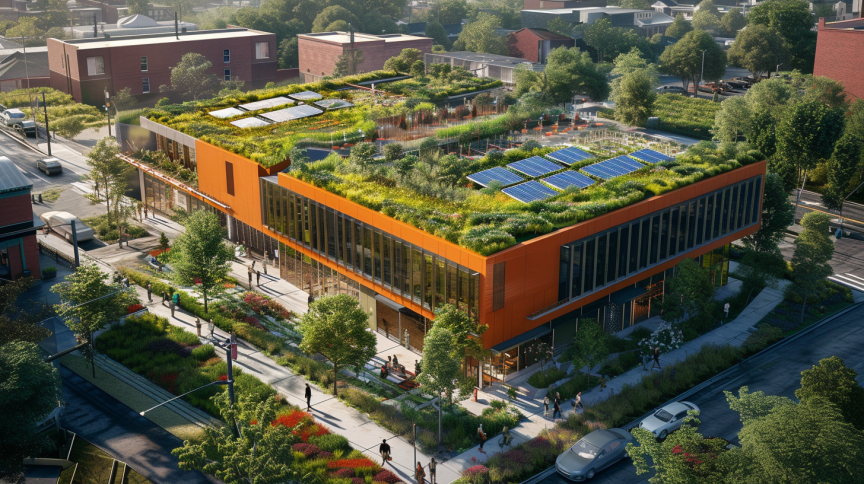Glossary of Green Business Terms

As our knowledge of sustainable business practices and our ability to implement them expand, so, too, does the lexicon of green business. The technology surrounding how to make our businesses more eco-friendly continues to evolve, and as we invent new solutions to help reduce our impact on the environment, we also need to create new terminology to describe these advances. By understanding the vocabulary of green business terms, we can gain a better understanding of how businesses affect the environment and what we can do to minimize these effects.
Green Business Terms
Biofuel: A type of fuel made from biological materials, usually plants, that have recently died (as opposed to fossil fuels, which come from biological sources that died long ago)
Cap and Trade: A government policy that caps the amount of greenhouse gas emissions allowed for each business, grants each business a number of credits that corresponds to this amount, and then allows businesses to trade credits that they don’t need. Under this type of program, greener businesses can sell their extra credits to businesses that create more emissions than they’re allowed to.
Carbon Footprint: The amount of carbon dioxide produced by the activities of a person or organization in a given period of time
Carbon Neutrality: The point at which the amount of carbon dioxide absorbed from the atmosphere is the same as the amount released into the atmosphere
Carbon Offsets: Payments made by a polluting business or other organization to fund efforts to reduce carbon dioxide emissions, offsetting the environmental damage of the polluting activities
Carbon Tax: A tax on the amount of carbon dioxide emissions released by a business or other entity or on fossil fuels that produce emissions when they are used
Circular Economy: An economic system in which products and materials are reused, refurbished, and recycled as much as possible
Corporate Social Responsibility: A business policy focused on both profitability and having a positive social and environmental impact
Cradle to Cradle: The production of goods that can be recycled when they are no longer useful, meaning that the materials get a new life rather than going into a landfill
Energy Audit: An assessment of how much energy a building uses and how this use can be minimized
Green Building: A build designed with the goal of maximizing efficient use of resources, both during and after construction, and minimizing negative effects on the environment
Green Business: A business that works toward improving the environment, either by offering eco-friendly products or services or implementing eco-friendly policies
Green Economy: The sector of the economy focused on producing goods and services that improve and protect the environment
Green Roof: A roof that’s covered with soil and plants, which better insulates the roof and provides a habitat for wildlife
Green Supply Chain Management: Managing how a business gets raw materials, makes products, and delivers those products to customers with the goal of minimizing the environmental impacts of every step of this process
Green-Collar Economy: An economy focused on developing clean energy technologies and creating more jobs in this field
Greenwashing: The deceptive positioning of a company as environmentally friendly in order to improve the company’s public image
LEED: Leadership in Energy and Environmental Design, an internationally recognized certification for green buildings
Life Cycle Assessment: An examination of the environmental impact of a product or service over the course of its entire life span, from the materials and energy consumed to create it to the waste that is generated when it is created and used
Photovoltaics: The field of study having to do with using solar cells to convert sunlight into electricity
Social Return on Investment: A measurement of the social and/or environmental impact of an investment in a nonprofit or business. For example, if a company invests in building sustainable and affordable housing, the SROI would include the lower environmental impact of construction as well as the improved living conditions of the new residents.
Solar Thermal: Technology that captures the sun’s energy as heat, which can be used to provide hot water for a building
Sustainability: Meeting our own needs today while ensuring that people in the future will be able to do the same
Triple Bottom Line: An approach to running a business that focuses on profitability, social responsibility, and environmental impact
Weatherization: Reducing energy use by better protecting the inside of a building from the elements
Zero-Carbon Building Standards: A set of guidelines created by the Canada Green Building Council for designing energy-efficient buildings with a minimal impact on the environment
More Green Business Resources
- LEED Certification
- Cap and Trade in Canada
- Seven Ways Your Business Can Prevent Pollution
- How the Canadian Carbon Tax Works
- People, Planet, and Profits: Managing the Triple Bottom Line
- Seven Forces Driving a Sustainable Business Revolution
- Commercial Property for Your Green Business
- What Is Sustainability in Business?
- Business Models for the Circular Economy
- How Corporations Use Greenwashing
- The Growing Market for Green Roofs




